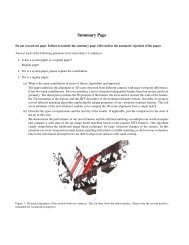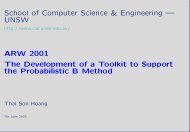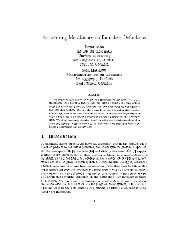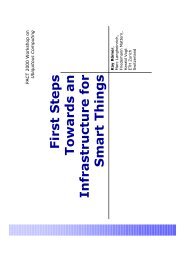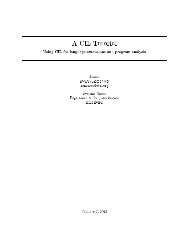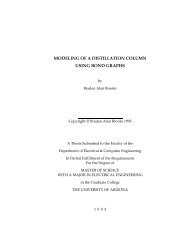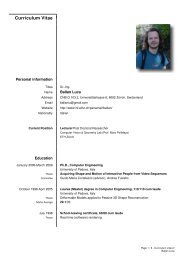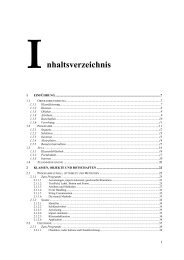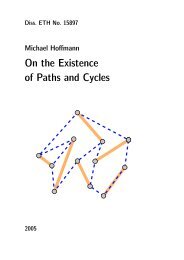Fast Robust Large-scale Mapping from Video and Internet Photo ...
Fast Robust Large-scale Mapping from Video and Internet Photo ...
Fast Robust Large-scale Mapping from Video and Internet Photo ...
Create successful ePaper yourself
Turn your PDF publications into a flip-book with our unique Google optimized e-Paper software.
struction. By contrast, we view summarization as an image organization step<br />
that precedes 3D reconstruction, <strong>and</strong> we take advantage of the observation<br />
that a good subset of representative or “iconic” images can be obtained using<br />
relatively simple 2D appearance-based techniques [29, 33].<br />
Given that [34, 35] provide excellent surveys on the work on binocular<br />
or multiple-view stereo we refer the reader to these articles. Our system<br />
for reconstruction <strong>from</strong> video streams extends the idea by Collins [36] to<br />
dense geometry estimation. This approach permits an efficient execution<br />
on the GPU as proposed originally by Yang <strong>and</strong> Pollefeys [37]. There has<br />
been a number of approaches proposed to specifically target urban environments<br />
using mainly the fact that they predominantly consist of planar<br />
surfaces [38, 39, 40], or even more strict orthogonality constraints [41]. To<br />
ensure computational feasibility large-<strong>scale</strong> systems generate partial reconstructions,<br />
which are afterwards merged into a common model. Conflicts<br />
<strong>and</strong> errors in the partial reconstructions are identified <strong>and</strong> resolved during<br />
the merging process. Most approaches so far target data produced by range<br />
finders, where noise levels <strong>and</strong> the fraction of outliers are typically significantly<br />
lower than those of passive stereo. Turk <strong>and</strong> Levoy [42] proposed to<br />
remove the overlapping mesh parts after registering the triangular meshes.<br />
A similar approach was proposed by Soucy <strong>and</strong> Laurendeau [43]. Volumetric<br />
model merging was proposed by Hilton et al. [44], Curless <strong>and</strong> Levoy [45],<br />
which was later extended by Wheeler et al. [46]. Koch et al. [47] presented a<br />
volumetric approach for fusion as part of an uncalibrated 3D modeling system.<br />
Given depth maps for all images, the depth estimates for all pixels are<br />
projected in the voxelized 3D space. Each depth estimate votes for a voxel in<br />
6



